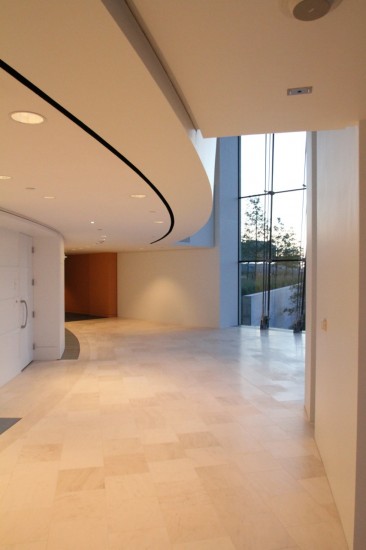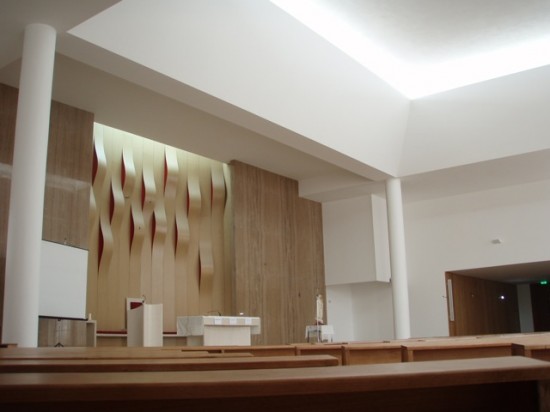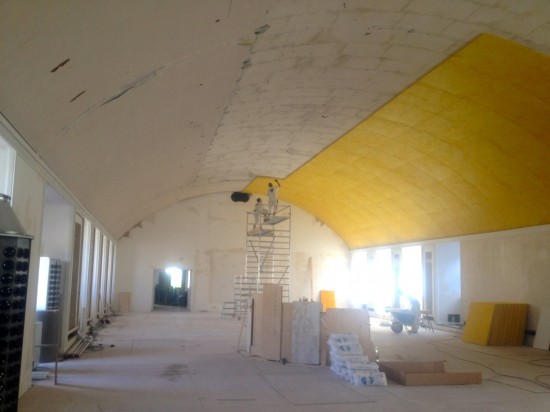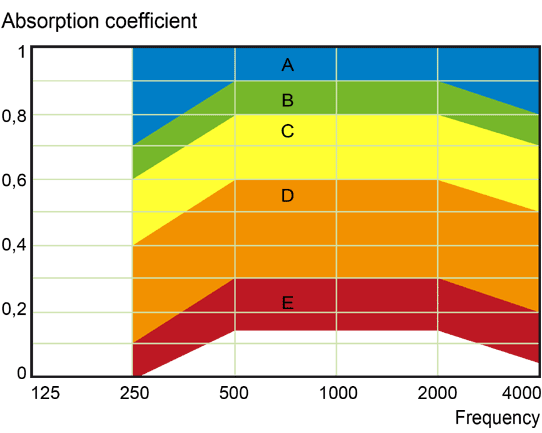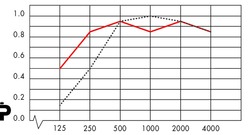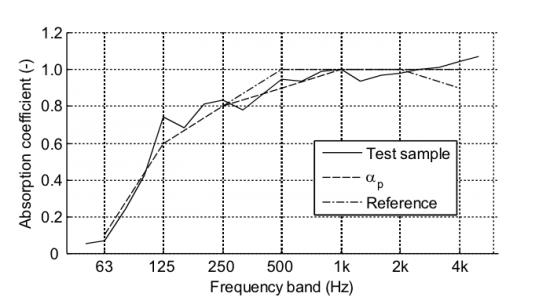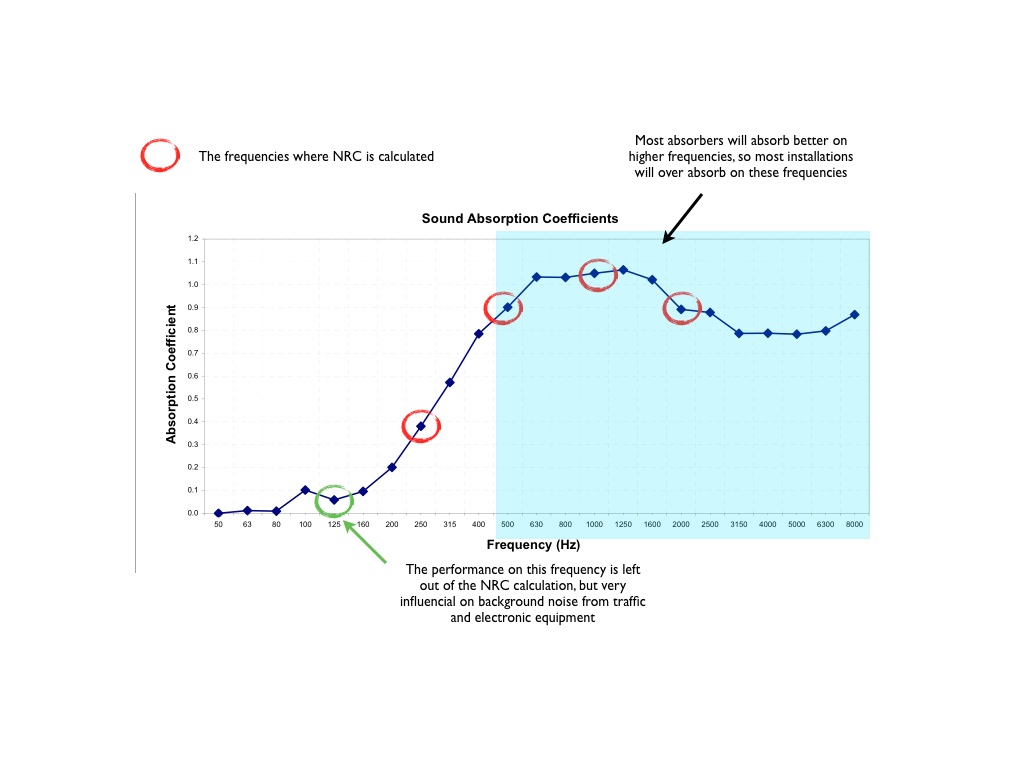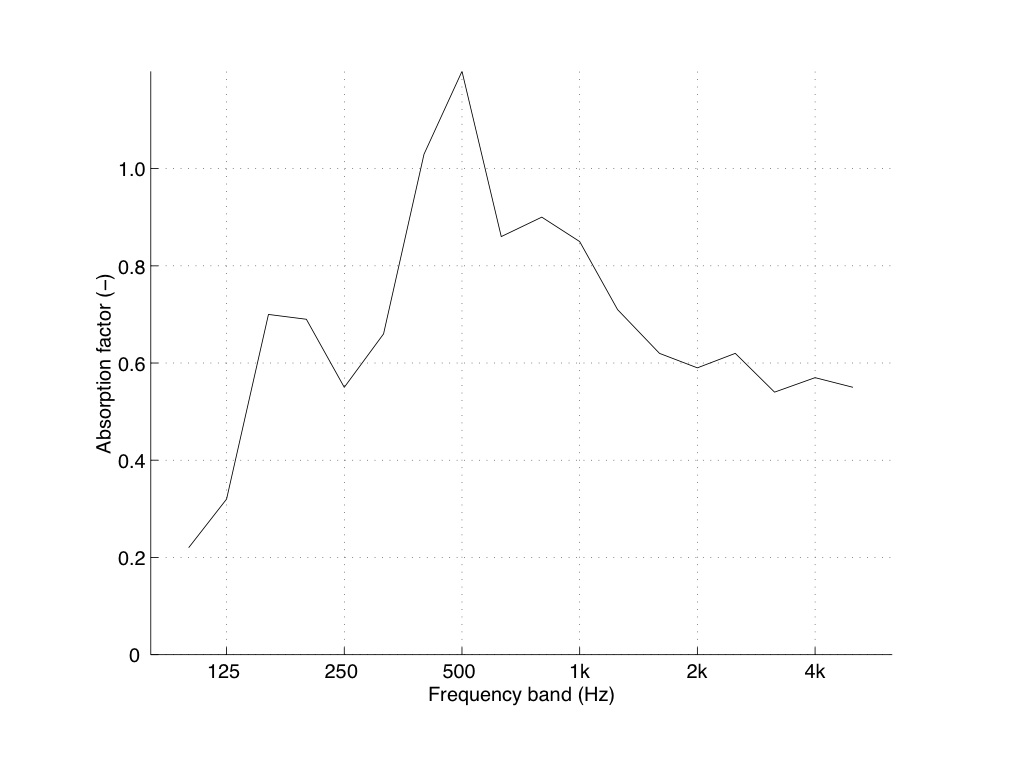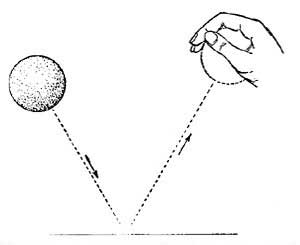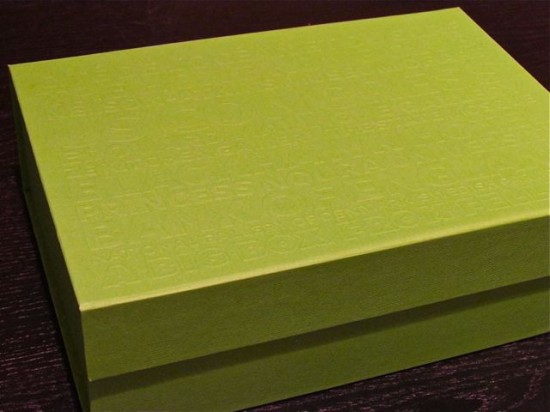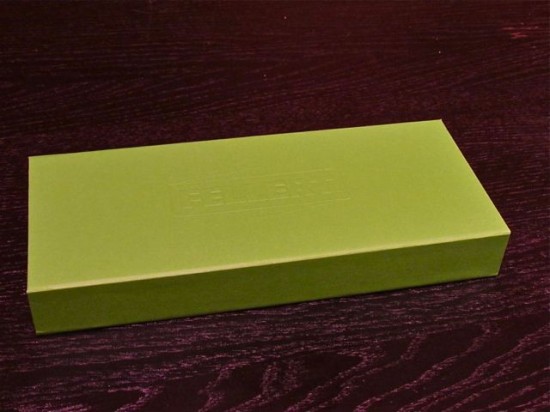Blog

We think a lot. We have opinions. About architecture. About acoustics. And why a really good album hasn’t been released since December 1, 1973 – in other words, Black Sabbath’s fifth studio album. Sometimes it happens. The magic. Protests, songs of praise? Speak now or forever hold your peace.
Fellert at the Liverpool central library
WRR UK is currently installing Fellert at the Liverpool central library, being one of the first Even Better Silk installations in the UK. The large dome in the centre of the building is left untreated, creating a massive sound projection towards the centre of the room, while the ceilings in the outer perimeter are covered with Fellert Even Better Silk, that takes away the sound reflections and creating a good sound environment for those who are looking for books in the endless shelves following the walls.
This ought to be one of the more odd Fellert installations we have seen ,but it is a spectacular building and very interesting to experience the sharp difference between the sound environment under the dome compared to the sound environment next to the shelves.
here are some snap shots form the ongoing installation
Leave a replyBloody Mary at the old pumphouse in Liverpool
The old pumphouse right at the Docks in beautiful Liverpool surely is a nice pub, but Bloody Mary was not their cup of tea. They even made it out of botteled drink mix and completely without any kind of decoration.
1 Baldguy out of 10 for that
Leave a replyIf printed pictures would be accompanied with sound
One thing strikes me after reading architects and interior decoration magazines for several years.
On almost every picture displayed there is a neutral white smooth seamless ceiling.
This is no coincidence. The natural smooth seamless ceiling is chosen because it doesn’t interfere with what the designer believes to be important regardless of whether it is the furniture, the fabrics, the floor tiles etc. Look at the following examples picked from Pinterest:
Nice, aren’t they?
But what would have happened if printed pictures would be accompanied with sound?
The strive for large voluminous rooms with a lot of hard, reflecting materials like marble, wood and glass really give a hard, cold noisy environment. What looks adorable, will in fact sound horrible.
Now look at these pictures:
Basically the same idea. The ceiling is just supposed to be in the background while the interior decoration is the star, with one big exception. The ceilings in these two pictures are Fellert acoustical ceilings, meaning that it will sound just as nice at it looks!
My point is that everyone who designs in this direction should automatically consider to use a seamless acoustical ceiling, as it will complete the circle:
Good looks, great sound.
Leave a reply
Fellert acoustical ceilings on curved surfaces
Fellert’s way of using unfaced absorbent boards which can be installed directly to a suspension grid or glued to various backings such as GWB, concrete etc. makes it especially suitable for curved surfaces. Most ceilings needs some sort of special arrangements in order be suitable for curved ceilings. Making a special arrangement basically means that you are leaving the initial idea and you might be facing lesser performance or other kinds of negative side effects when trying to do that.
This is not necessary when you install Fellert acoustical ceilings on curved surfaces. Use the standard components, bend it and be happy!
This picture,from an ongoing installation in Denmark, illustrates this very well.
Leave a replySound class and weighted alpha
As well as ASTM has its terminology on how to express the absorption of materials and how to define this, the International standardization organization ISO got one as well.
When ASTM talks about NRC to express the sound absorption of a material, ISO talks about Sound class and weighted alpha.
NRC is explained in a previous post. If you want to catch up, click here
Just like the NRC, the weight alpha is a calculated average of the material’s ability to absorb sound in a range of frequencies.
While NRC is the arithmetic average of the absorption in four specific frequencies, in ISO 1654 the practical absorption is calculated in the octave bands 250 hz, 500 hz, 1000 hz, 2000 hz and 4000 hz. The practical absorption coefficient is the arithmetic average of the 1/3 octave bands having each and one of those octave band frequencies as their centre frequency. The practical absorption coefficients in the given octave bands are then compared with a set of reference curves in steps of 0,05 where the maximum negative sum of deviations must not exceed 0,10.The weighted alpha is then the reference curve absorption at 500 Hz.
Lost most of you there, didn’t i?
The reason for calculating the practical absorption is because it makes it easier to compare with the reference curve and the reason for going through all the trouble of calculating averages of sets of frequencies is simply because it will give you a more accurate practical absorption. You want to use as much of the available data you have as possible.
The reason for the reference curves looking the way they do are mostly “political” as it has been decided by people with a lot of influence (read the large manufacturers of acoustical ceilings). Theses reference curves happens to fit very well together with the products they supply. Someone might try the “hen and the egg story” by saying that they have actually developed products according to the demands in the standards, but since they had a great influence in what the standards should say, it’s probably the opposite. The standards are written according to the products available through these manufacturers.
Why is this important to understand?
-Simply because most architects rely on these standards to give them the most suitable products for their project. Most architects makes things as simple as just referring to the sound classes A -E, as in the picture below.
These sound classes are defined from what reference curve the product has and in which sector it is located, where A is the highest class and E the lowest.
Make a note of the fact that the sound class does not take any consideration at all to the absorption below 250 hz. This is not a coincidence.
In the previous post about NRC we made pretty clear the importance of having a flat absorption curve within a the complete frequency range including 125 hz, but having good enough absorption already from 125 hz, all the way to 4000 hz is difficult and there are few absorbers that can actually do that.
What i mean is that modern standards on room acoustics (like the Swedish SS25268_2007) says that the reverberation time at 125 hz in a room where you spend a significant time of your day, such as an office, a patient room in a hospital, classrooms etc. shall not exceed the reverberation time at 250 hz with more than 0,1 or sometimes 0,2 seconds.
If you still want to have an A absorber which has a minimum absorption of 0,7 at 250 hz, you’ll need, in most of the normal facilities mentioned above, to have an absorption at 125 hz of at least 0,55 and most likely more than 0,60 to fulfill the standard’s requirements, which in turn means that you need to have a flat absorption curve through the entire frequency range.
As an example the graph below shows the absorption curve for one of the most commonly used tiles ceilings, the Ecophon Focus A
The black dotted curve is with a void depth of 50 mm and the red curve with a void depth of 200 mm (ideal situation).
The 50 mm void installation is a class B absorber with a weighted alpha of 0,70, while the 200 mm void installation is a class A absorber with an impressive weighted alpha of 0,95, but look at the absorption at 125 hz. It is just 0,50 which is clearly not good enough to live up to the standard’s requirements.
As a reference look at this 200 mm void installed Fellert Even Better Silk 39 mm
The practical absorption at 125 hz is 0,60 which is good enough to meet up to what the standard says.
Look out for the next post where we are examining reverberation time and room acoustics.
Leave a reply
NRC, weighted alpha value, sound absorption class, what does it really mean? pt 2
Acoustical ceilings are very often accompanied by mystic terms and expressions but what is really the practical use of all these expressions and how do i know how it will affect my sound environment.
In the previous post we tried to explain Sound absorption. If you missed it, catch up here.
Let’s see if we can have NRC made understandable and how to get the most out of it.
It is not unusual that the NRC value is used in architectural specifications as the only parameter to define the product to be used in terms of sound absorption.
NRC is the Noise Reduction Coefficient and that is the average of how much of the sound that hits the surface of material that is absorbed on 4 specific frequencies. These frequencies are 250 Hz, 500 Hz, 1000 Hz and 2000 Hz. The reason for choosing these particular frequencies is that they are located within the frequency range of human speech and it would be easy to assume that they should be more important to monitor compared to other frequencies of sound above or below these.
This is not entirely true. The good thing with the NRC value is that it is relatively easy to compare different products and to quickly get a rough idea of how absorbingthe product is.
The negative aspects of making things too simple are that the primary reasons for why you want to add sound absorbing products to your room is because you want it to be a better environment to be in. You want it to be quieter with less background noise, you want it to be easy to make yourself heard, even if the room should be crowded with people and you want to be able to stay there for a relatively long period of time without getting abnormally tired, dizzy or ending up with a severe head ache.
– I’m sorry to say so, but you can’t read all that out of a number which is the average of the sound absorption of 4 specific frequencies.
To just relying on the specific absorption of four single frequencies is like measuring who’s got the highest speed at 10 km, 20 km, 30 km and 40 km of a marathon, calculate the average out of those and the winner would be the runner with the highest average. If nothing else, I guess there would be a lot less people waiting at the finish line.
Although we would prefer if there always were a RASTI or STI simulation made by a professional acoustical consultant to accompany every new building, it easy to realize that there is no room for that in all cases.
But if you want to cut corners, make sure to do it together with an acoustical consultant and make sure that the specification doesn’t just describes the NRC. See to it that you will get the absorption test report as well. Don’t settle with anything but the original third party test report though as there might be vital information in the report which can be left out in a product brochure or data sheet.
Make sure to check that they are done according to the standards ASTM C423-09 and that the test specimens are mounted according to ASTM E795-05 and that there are no exceptions or remarks noted and make sure that this graph is included into the architectural specification.
Look at the graph showing the absorption on different frequencies to get this explained more into detail.
The graph above illustrates the sound absorption of a product with an NRC of 0,80 which is pretty good. But the absorption at 125 Hz is only 0,06 and the curve is rather steep from 125 Hz up to 500 Hz. If you are designing an office where you want to have enough absorption to take care of the background noise from HVAC, computers, and other electronic equipment, you need to add quite a lot of this product to achieve that. In practical terms that would mean that you need to cover, not only the ceiling but also the walls and that will be quite expensive. Moreover there is a substantial risk that the room will be over absorbed and the feeling when going in there would be that the room is “dead”.
Imagine that you decide to use this product instead
The NRC of this product is 0,75 which is less than the previous product, mainly due to its lesser absorption in the higher frequencies, but the absorption at 125 Hz is 0,32 which is more than 5 times higher than on the previous product.
This would mean that you only need 1/5 of this product to get the same absorption at 125 Hz compared to the other product. Less cost and less risk that the room will feel dead.
If you look at the last graph you will see that the curve is much more flat compared to the curve of the previous product and that is what you should aim for in most cases unless you are willing to combine different products with different characteristics and that your are able to do that in the correct way.
Next post will explain the European version of NRC, the weighted alpha coefficient and the sound classes A-E.
Leave a reply
NRC, weighted alpha value, sound absorption class, what does it really mean? pt 1
Acoustical ceilings are very often accompanied by mystic terms and expressions but what is really the practical use of all these expressions and how do i know how it will affect my sound environment. Let’s see if we can make some sense out of all this and let’s start with the expression sound absorption:
Sound is energy causing variations in air pressure that is moving around with logically enough the “speed of sound”. What makes us hear these sounds are that we have a thin membrane of skin in our ears that will vibrate along with the differences in air pressure and by reading these vibrations of the skin membrane our brain will translate that into the correspondent sound.
Any surface can get exposed to these variations in air pressure and depending on the composition of the surface, thin, thick, hard, soft, rigid, porous it will react in different ways. If we want to simplify this a bit by only focusing on how much of the energy that the surface can absorb. All the energy that can’t be absorbed will be reflected back in the room again, in another direction until it hits something else.
The easiest way of understanding this is to take an ordinary tennis ball and through it agains a wall, floor or ceiling in a room.
You will then experience how it will bounce to hard surfaces and move on in another direction and how the bounce will die as soon as it hits something soft like a thick rug, curtains or a soft pillow.
The tennis ball can also illustrate the differences in sound absorption on high and low frequencies. Imagine the tennis ball thrown at a heavy curtain. If the balls is thrown with high speed, to illustrate high frequency sound, it will fall dead when the energy is absorbed by the curtain, but if you throw the ball try gently to the curtain, to illustrate a low frequency, the curtain will start to swing back and forth by the energy given by the ball. The energy isn’t absorbed, it is just transported into another media. If the curtain should be able to absorb the gently thrown ball it would need the assistance of for example someone’s hand on its back side to support where the ball hits.
You can now understand that a material that is very good at absorbing high frequencies isn’t automatically a good low frequency absorber and sometimes also the opposite. Choosing products for sound absorption is therefore very often a kind of compromise. It is generally speaking always easier to absorb high frequencies compared to low frequencies, so most rooms are over dimensioned when it comes to absorbing high frequencies to be able to meet up to the requirements on the low frequency absorption.
Materials that absorbs high frequencies are normally porous where the pores can”suck in” the sound energy and the endless walls of these pores will take the energy out the it.
Materials that can absorb low frequencies are often two combined materials with different characteristics working together like for example a heavy curtain and a cavity behind it before there is a wall.
The next posts will handle NRC and weighted alpha coefficients and with the knowledge above you will soon understand the limitations of these when it comes to dimensioning your room acoustics.
Why is is so important to absorb sound to get good room acoustics?
Look at this picture and look out for the post about reverberation time.
Leave a reply
Fellert wishes you all a happy midsummers eve
Tomorrow at the 22:nd of June, it’s time to celebrate the midsummers eve here in Sweden. This is probably one of the more important festivities for us and everywhere you look people are getting reedy for the big feast. Children are collecting flowers for their flower wreaths and the young people are planning on how to get insanely drunk.
It is now time to eat the pickled herring with boiled potatoes and a big schnapps to go along with it.(which some of our North American friends tried last summer).
(and after a few schnapps, it’s time for the “små grodorna” dance)

You just got to love us Swedes, don’t you!
Leave a replyThe launch of Fellert Even Better
The new Even Better product line is now officially launched.
A monolithic ceiling that can be seamlessly installed in areas of 1000 m2 or more without having to break up the smooth monolithic look with ugly expansion joints.
A monolitic ceiling, only 43 mm thick, that can be shaped, colored and textured anyway you’d like.
A monolitic ceiling that will continue to look excellent, years after years, due to its ability to be repaired “spotlessly”
What’s so remarkable about all this?? There must be numerous different ceilings that can how those properties..
No there isn’t. At least if you take into account that this particular monolithic ceiling will absorb 95% of all the noise that hits the surface. Use all the brick, marble and glass you’d like. Design large open areas with 5-10 meters up to the ceiling. Just make sure to use Fellert Even Better in that ceiling and you will experience a speech intelligbility you’d never thought was possible.
Hearing is believing. Check out this old post that explains the difference. Click here.
Make sure to also watch how the product low is officially launched also in the U.S. as you can see here:
And the first projects are currently under installation in Europe. Here are some pictures from the Viana sports centre in Portugal.
Please contact Fellert Head office at info@fellert.com or +46 (0)33 430 23 10 if you want to receive the architect’s box containing one sample of Even Better Silk, size 210 x 290 mm and the cool Fellert case portfolio highlighting seven specially selected Fellert cases around the world.
Or if you would prefer the sample box containing one sample of Even Better Secern together with one sample of Even Better Silk. Sample sizes 100 x 150 mm. The sample box does also include a Fellert brochure.
Leave a reply
Swedish national day
Today, the 6:th of June we are celebrating the Swedish national day.
We all count on that you will support us by eating meatballs, wait patiently in line when queing and tries to do everything “lagom” much.
Leave a reply


